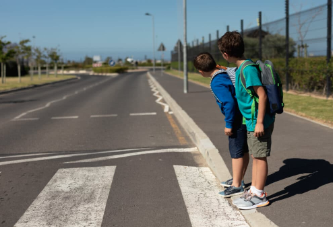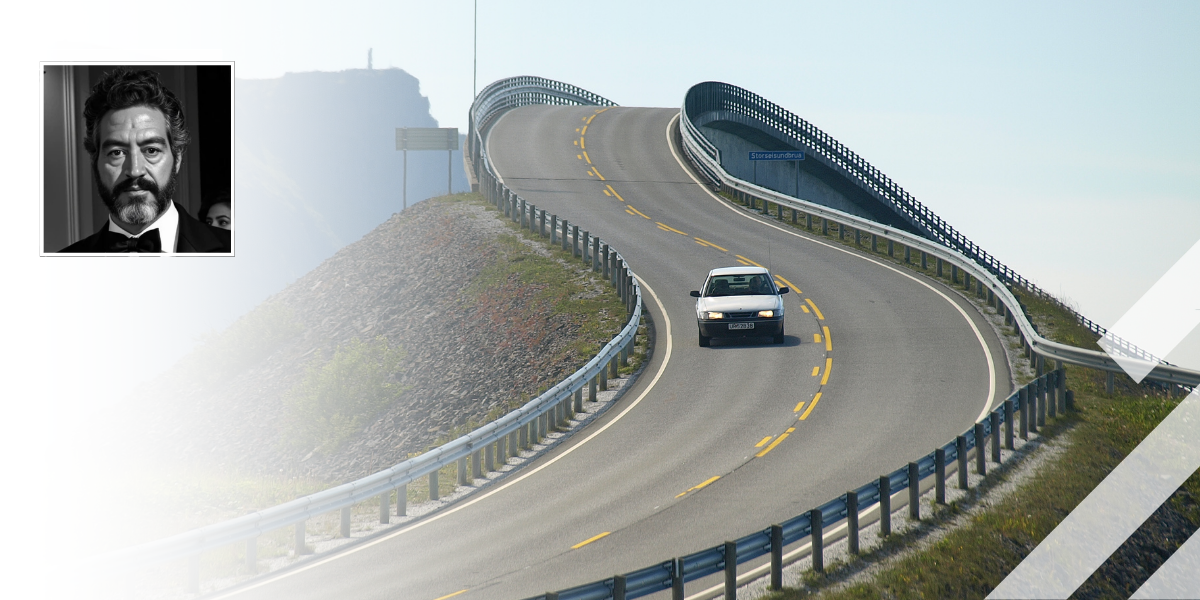The unpredictability of youth and other road safety challenges
In the second of our trio of features focusing on road safety innovation, Intertraffic talks to Dr Suzy Charman, Executive Director of the Road Safety Foundation, sister charity to iRAP (International Road Assessment Programme). The conversation takes in children-centric road safety measures, neurodivergence, car seats and driverless taxis.
Dr Suzy Charman began her 20-year road safety career at EuroRAP, where she was the international programme manager and oversaw the establishment of iRAP. She was then at TRL, latterly Head of International Road Safety, before joining the Road Safety Foundation in 2017.
She leads a number of programmes at the Road Safety Foundation including supporting National Highways and Welsh Government for their iRAP Star Rating work, leadership of the United Kingdom Road Assessment Programme and undertaking research on urban mobility and speed.

The Road Safety Foundation, founded in 1986, is a charity that advocates for safe roads through the delivery of a Safe System where the opportunity for death and serious injury is systematically and proactively eliminated, and supports road authorities and other stakeholders with tools and methodologies to help them prioritise their life-saving road safety efforts. The Foundation also undertakes research and develops new thinking and tools for Safe System delivery.
The Safe System is based on four key principles designed to minimise the risk and severity of crashes. The four key principles being: People Make Mistakes, Human Vulnerability, Shared Responsibility and Redundancy in the System.
Intertraffic: "Lives can be saved with innovative road safety measures, technology and campaigns, but what needs to be different when thinking about saving children's lives?"
Dr Suzy Charman (DSC): The first thing that that comes to mind is that of course, you have to acknowledge the greater level of fragility of children to collision forces. Children's bodies are just less able to withstand crash forces compared to adults.
My interest in child road safety peaked when I had my own children. I have a six-year-old and a 10-year-old and what I learned between having them is that there seems to be this weird race for new parents to turn their children’s car seats to forward facing, which is horrifying when you consider this the physical differences between young children and those that are more developed. In Sweden they keep their children rear facing until they're about 7. I invested in a rear facing seat and my youngest was able to use it until she was 5.
"You have to acknowledge the greater level of fragility of children to collision forces. Children's bodies are just less able to withstand crash forces compared to adults"
I’m 1.89m (6ft 2ins) and everybody in my family is tall so it was never going to be suitable for her until she was 7 because she outgrew it. What will typically happen is that people will turn their child to forward-facing sometime between the age of 1 and two, like it is a rite of passage for a toddler. That's a pattern and we've got to somehow explain to people that it is much safer to rear face for longer – it is mainly because it is much better for the spine to be supported rear facing because if you're hit and the child is forward facing the child's head snaps forward and then unfortunately, we get this awful thing called internal decapitation, which is pretty gruesome.
Intertraffic: "What’s the solution? How do you change people’s habits and behaviour, even when the lives of their children are at stake?"
DSC: The next thing that comes to mind is a piece of work that we've just started doing on Neurodivergence and road safety. So, you'll be aware that about one in five people are neurodivergent in some way, whether that's autism, ADHD or dyspraxia or other neurodivergences. We have a greater awareness these days of neurodivergence as a whole, but what we haven't done yet is establish an evidence base about children who have special educational needs, neurodivergence and road safety. The primary concern there is about some of the traits that could be quite critical to safe road use. So executive functioning and impulse control, appreciation of risk, all of those things can lead to a cocktail where we think that neurodivergent children may be an increased risk.
"We have a greater awareness these days of neurodivergence as a whole, but what we haven't done yet is establish an evidence base about children who have special educational needs, neurodivergence and road safety"
Intertraffic: "Is the thinking that neurodivergent children become “road independent” later? And the later that happens the more likely they are to be seriously injured?"
DSC: We're looking at whether there's an impact on road use and how children gain that independence, but also, we're looking at the level of collisions that they might be involved in. That work only began in October, so we haven't got very far but it’s really important because road use is something that typically happens early on in a child's day.
Anyone with children who are neurodivergent will understand that the stress of getting them ready for school in the morning is probably slightly higher than with neurotypical children. And then you've got the issue of once you've left the house you've then got the noisy, smelly, stressful streets to contend with. We did a preliminary questionnaire ahead of putting in a proposal to the Road Safety Trust for this particular piece of work and found that there were some children that weren't attending school because the route to get to school was so stressful. Surely this is something we can do something about.
"Anyone with children who are neurodivergent will understand that the stress of getting them ready for school in the morning is probably slightly higher than with neurotypical children"
Intertraffic: "We’ve all seen neurodivergent schoolchildren wearing headphones to help them block out extemporaneous noise, but that must also be counterproductive at times, too?"
DSC: You're sort of trading off the anxiety with being able to hear traffic approaching and so on. So, there must be some sort of technological solution that would allow children still to be able to hear traffic but not to necessarily be so overstimulated from all of the external noises. I'm sure there'll be technology solutions in the future. We just haven't quite got that far yet to know what they need to be.
Intertraffic: "And somewhere in all this thinking you now have to consider driverless vehicles and how they react in traffic."
DSC: I took a driverless Waymo robotaxi in Atlanta recently and I was chatting to them about the issue that children are less predictable than adults. They may run after a ball into the street, and they might have a meltdown on their way to school, and they might just run off and do irrational and random things because that's what children do. It was really interesting that the Waymo cars will adapt when it detects people that are smaller in stature. It will drive more slowly, and it will give more space around children, which I thought was interesting. It's the sort of thing as a considerate human driver you would do.
"Waymo cars will adapt when it detects people that are smaller in stature. It will drive more slowly, and it will give more space around children"

Intertraffic: "Generally speaking, people are very resistant to the idea of changing their behaviour, so how does the Road Safety Foundation approach that thorny issue?"
DSC: This is why technology is important. It's why road safety engineering is important because ultimately we need to provide a system that accommodates human behaviour – the things that a teenage child may do while being distracted by their phone or feeling invincible – because they don't have a developed prefrontal cortex yet to spot the danger. It also needs to accommodate the way that children find it hard to process gaps in two-way traffic. At the heart of the safe system is the notion that we design the system to accommodate the fragility of the human body too, so when people make poor decisions, aren’t able to cope with the demands of road use, and when we get ourselves into difficulty, the end result is not death or serious injury.

"We need a system that is designed around how our brains work, but also we need a system that's designed around the fragility of the human body, so that when we do ridiculous things the end result isn't death or serious injury"
We're trying to design a system so that when crashes do happen, and they will, they're not deadly.
Share your story
Do you have an innovation, research results or an other interesting topic you would like to share with the professionals in the infrastructure, traffic management, safety, smart mobility and parking industry? The Intertraffic website and social media channels are a great platform to showcase your stories!
Please contact our Sr Brand Marketing Manager Carola Jansen-Young.
Are you an Intertraffic exhibitor?
Make sure you add your latest press releases to your Company Profile in the Exhibitor Portal for free exposure.

La IA Revoluciona la Industria del Transporte de Carga en México: Ahorro de Combustible, Mayor Productividad y Seguridad Vial
02 January 2025

5 minutos con… Arturo Cervantes: Impulsando la Seguridad Vial en México
28 November 2024

Reforma de Seguridad Vial en Chile: Invirtiendo la Tendencia con Políticas Inteligentes y Tecnología para una América Latina más Segura
28 November 2024
Get up to speed on the mobility industry - our newsletter straight to your inbox!
